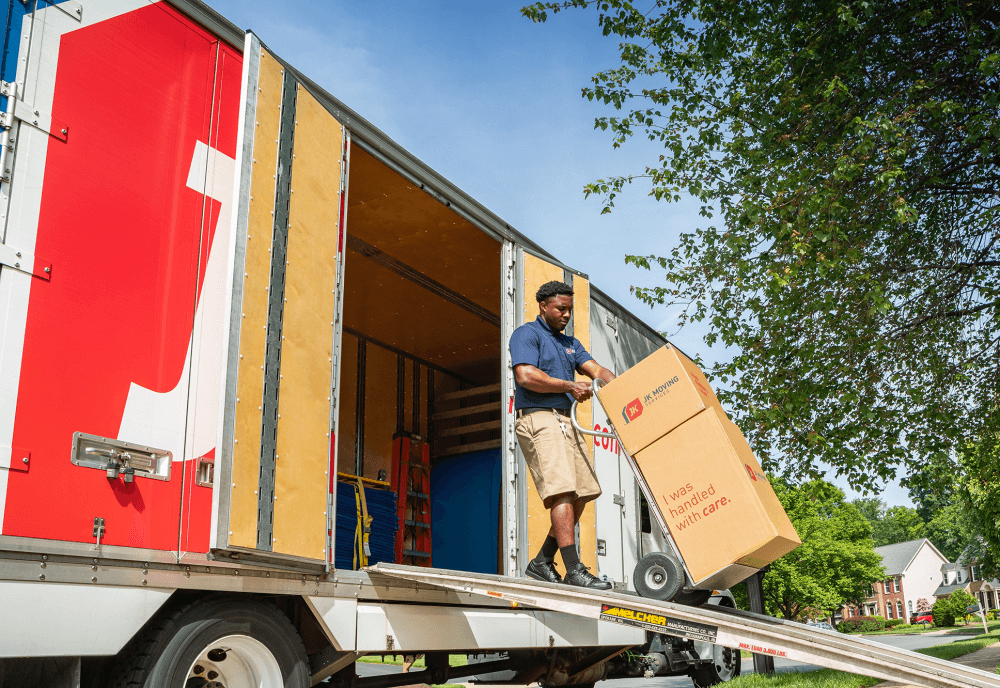Movers With Packing Services: Expert Relocation Specialists Can Help Make Your Transition Smooth And Stress-Free
History and Evolution of Moving Solutions
The Dawn of Moving: From Muscle to Machines
Photo this: a handful of strong men carrying heavy trunks on wooden carts, navigating cobblestone streets with sweat and decision. Before the modern-day moving market took shape, moving was a brutal, labor-intensive job. In ancient times, relocation frequently indicated relying on large physical strength and fundamental tools. The lack of specialized services indicated families and merchants had to coordinate every information themselves, typically risking damage or loss.
But isn't it interesting how requirement fuels innovation? As cities expanded and commerce grew, the need for effective, reputable moving options became glaringly apparent. Get in the age of horse-drawn wagons and later, motorized lorries, which revolutionized how belongings took a trip from one place to another.
Industrial Transformation: The Catalyst for Change
The 19th century's industrial boom reshaped lots of aspects of life, consisting of how people moved. Suddenly, metropolitan migration surged, and with it, the demand for professional movers increased. No longer was moving a basic chore; it progressed into a customized service offering:
- Packing competence to safeguard delicate products
- Organized packing techniques making the most of space
- Transport options customized to various distances
This period marked the birth of companies devoted solely to moving, laying the foundation for today's complex logistics and customer-centric approaches.
Technological Developments and Their Effect
Can you think of moving without modern-day equipment? The arrival of hydraulic lifts, forklifts, and pallet jacks changed the market overnight. All of a sudden, movers might manage large furnishings and heavy appliances with ease, lowering injuries and improving performance.
Moreover, the combination of digital innovation stimulated a new age of innovation. GPS tracking, online reservation platforms, and real-time inventory management have become staples in the moving services landscape. These tools not only improve transparency but also empower customers to stay connected and informed throughout their moving journey.
Key Turning Points in Moving Services Advancement
| Period | Development | Significance |
|---|---|---|
| Ancient Times | Manual labor and basic carts | Foundation of moving as a requirement |
| 19th Century | Horse-drawn wagons and packaging services | Birth of expert moving companies |
| 20th Century | Motorized trucks and mechanized equipment | Increased effectiveness and scale |
| 21st Century | Digital integration and GPS technology | Enhanced consumer experience and logistics |
Reflections on the Journey
Reviewing the evolution of movers, one might question: how did a simple act of carrying personal belongings end up being an advanced market? It's a tale of durability, adjustment, and continuous improvement. From the sweat-soaked streets of old to the precision-driven operations these days, the history of moving services is as dynamic as the people who rely on them.
Next time you pack a box or hire a mover, think about the layers of history ingrained in every step. The journey of movers encapsulates human resourcefulness, changing what was as soon as a difficult job into a seamless experience.
Checking out the Spectrum of Moving Services
When the time concerns shift your life from one address to another, the series of moving services available can feel like browsing a maze. Do you need an easy loading and dumping team, or does your relocation need the skill of complete packaging and unpacking? Comprehending the subtleties can conserve hours of frustration and unforeseen costs.
Typical Types of Moving Providers
- Local Moves: Developed for relocations within a city or city, these services normally operate on a hourly basis, best for short distances.
- Long-Distance Relocations: Covering moves beyond 100 miles, these need more coordination, from logistical preparation to secure transportation, frequently priced by weight and distance.
- Full-Service Moves: Movers manage everything-- packing, loading, transporting, dumping, and in some cases even unloading. Suitable for those pushed for time or energy.
- Self-Service Moves: You pack and fill your personal belongings, while the company handles transportation and unloading. A middle ground offering cost savings and some convenience.
- Specialized Relocations: For fragile, large, or valuable products like pianos, antiques, or artwork, requiring specific equipment and competence.
Specialist Tips to Browse Your Moving Service Choices
- Prioritize Flexibility: Pick a service that adapts to unexpected delays or last-minute modifications-- stiff schedules can turn a smooth relocation into a logistical nightmare.
- Inspect Insurance Options: Not all moving companies offer the very same level of protection. Comprehending your protection can prevent heartache if something goes awry.
- Request Comprehensive Inventories: A precise item list prevents disagreements and makes sure accountability, specifically when dealing with long-distance or specialty moves.
- Consider Season: Seasonal demand can affect schedule and prices. Early reserving throughout off-peak seasons may give better service and versatility.
- Ask About Packing Products: Premium boxes, bubble wrap, and cushioning can be the difference in between a scratched treasure and a pristine arrival.
Table: Service Features Compared
| Service Type | Who Packs? | Transport Mode | Normal Pricing Model | Suitable For |
|---|---|---|---|---|
| Regional Move | Consumer or Movers | Truck | Hourly | Short ranges, little loads |
| Long-Distance Move | Movers | Truck or Container | Weight & & Distance | Cross-state or regional moving |
| Full-Service Move | Movers | Truck | Flat or Weight-Based | Time-sensitive, high-stress relocations |
| Self-Service Move | Customer | Truck or Container | Flat or Per hour | Cost-conscious, hands-on movers |
| Specialized Move | Movers with competence | Specialized Equipment | Custom-made Quote | Fragile or valuable items |
The Unseen Complexity Behind Each Option
Have you ever wondered why moving seems simple and easy on click here tv but turns into a waterfall of last-minute choices in reality? The truth lies in the intricacies of each service type. For example, full-service relocations may look like a high-end, but the knowledge associated with packaging fragile heirlooms or taking apart large furnishings is a craft honed over years. Meanwhile, choosing a self-service move might conserve cash, but it demands a keen understanding of how to pack efficiently-- did you understand that stacking oddly shaped boxes improperly can cause internal shifting during transit, wrecking vulnerable contents?
Choosing the best kind of moving service is not practically benefit-- it's about safeguarding your memories and investments. What's your move's story going to be?

Packing and Moving Methods
Ever attempted to fit a travel suitcase that just will not close? That's the sort of puzzle professional movers solve daily-- however on a much bigger scale. The secret lies not in strength but in tactical placement and smart use of area. Packing isn't merely about packing items into boxes; it's an art form where every inch counts.
Layering for Success
Imagine a painter layering colors to develop depth. When packing, start with heavier items at the bottom, then cushion with softer products like bubble wrap or towels. This prevents damage and makes the most of box stability. Strangely formed items can slip into gaps, minimizing wasted space.
- Wrap fragile products individually with tissue or foam to prevent scratches.
- Usage clothing as cushioning-- it's both efficient and environment-friendly.
- Fill voids with packing peanuts or crumpled paper to minimize motion.
Identifying: The Unsung Hero

What good is best packing if you invest hours searching through boxes? In-depth labeling is a game-changer. Rather of vague tags like "Kitchen," attempt this approach:
| Label | Description | Priority |
|---|---|---|
| Fragile - Glassware | Handle with care, consists of delicate items | High |
| Basics - Opening Night | Items required immediately after moving | Immediate |
| Books - Study Room | Stacked, heavy books | Medium |
Strategic Packing Tips
- Dismantle big furniture and keep screws in identified bags taped to the pieces.
- Use uniform box sizes when possible-- stacking becomes simpler and much safer.
- Don't overpack boxes; weight limitations exist for a reason. Go for 40-50 pounds max.
- Wrap furnishings edges with moving blankets to avoid scratches during transit.
- Seal boxes with premium packaging tape-- double layers on the bottom are vital.
Why do some movers swear by a color-coded system? Due to the fact that it gets rid of uncertainty on moving day. Designate each room a color and mark boxes appropriately. This small step can conserve hours when discharging and unpacking.
Packing and moving demand precision-- like a chess video game where every move counts. Have you ever observed how some movers deal with large items effortlessly? They leverage angles and pivot indicate navigate tight corners without damage. It's not muscle; it's strategy.
Hidden Struggles Behind the Moving Van Doors
Ever viewed a team of professional movers carry a grand piano through a narrow doorway and questioned how they pull it off without a scratch? The art of moving isn't just muscle and trucks; it's a delicate dance with unpredictability. Weather can turn from a sunlit true blessing to a torrential threat in minutes, turning a straightforward drive into a logistical maze.
One well-known difficulty is the labyrinthine design of some homes or houses. Staircases too tight for dollies, doorways narrower than basic boxes, or elevators that barely fit a couch-- these physical quirks require innovative services on the area. Movers typically resort to non-traditional tactics like dismantling furnishings or using customized cushioning to protect both the item and the home.
Precision Packing: More Than Just Covering
It's tempting to believe packaging is simply stuffing boxes, however the truth is an intricate puzzle of weight distribution and fragility. Movers need to prepare for how items will shift throughout transit-- a mistake can mean shattered heirlooms or dinged up appliances. The trump card? Strategic layering and utilizing materials with specific shock-absorbing qualities.
- Bubble wrap is standard, but alternating it with foam sheets can dramatically minimize effect damage.
- Heavy products address the bottom; fragile ones nestle on top, cushioned by soft textiles.
- Labeling boxes not just by contents but by managing instructions guarantees quicker, safer dumping.
Another less talked about pressure is the psychological toll. The clock ticks relentlessly, and every hold-up ripples through tight schedules. Remaining calm amid disorderly last-minute changes requires mental dexterity and group synergy.
Traffic Congestion and Timing: The Unnoticeable Challengers
| Barrier | Specialist Strategy | Impact |
|---|---|---|
| Urban congestion | Route optimization apps and flexible scheduling | Decreases hold-ups and fuel intake |
| Parking restrictions | Pre-arranged authorizations or tactical parking nearby | Avoids fines and time loss |
| Unforeseeable weather | Water resistant coverings and contingency plans | Maintains the condition of goods and devices |
Do you really know what it requires to keep a moving day on track? It's not simply about strength or endurance; it has to do with insight, flexibility, and a deep understanding of every piece of the puzzle. The next time you see movers at work, keep in mind: behind that seamless operation lies a series of computed maneuvers and fast thinking that couple of ever notification.
Comments on “Movers For Apartments: The Benefits of Employing Full Service Movers”